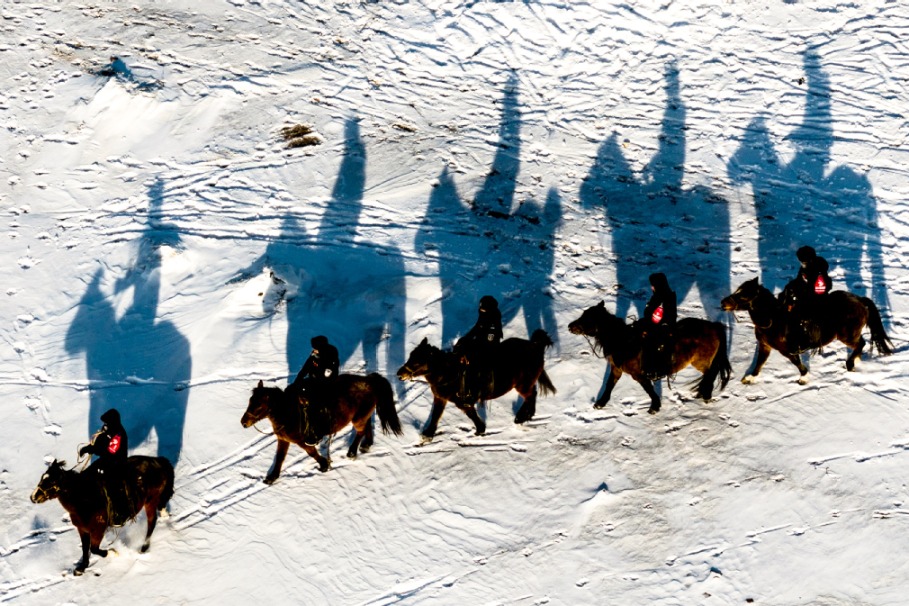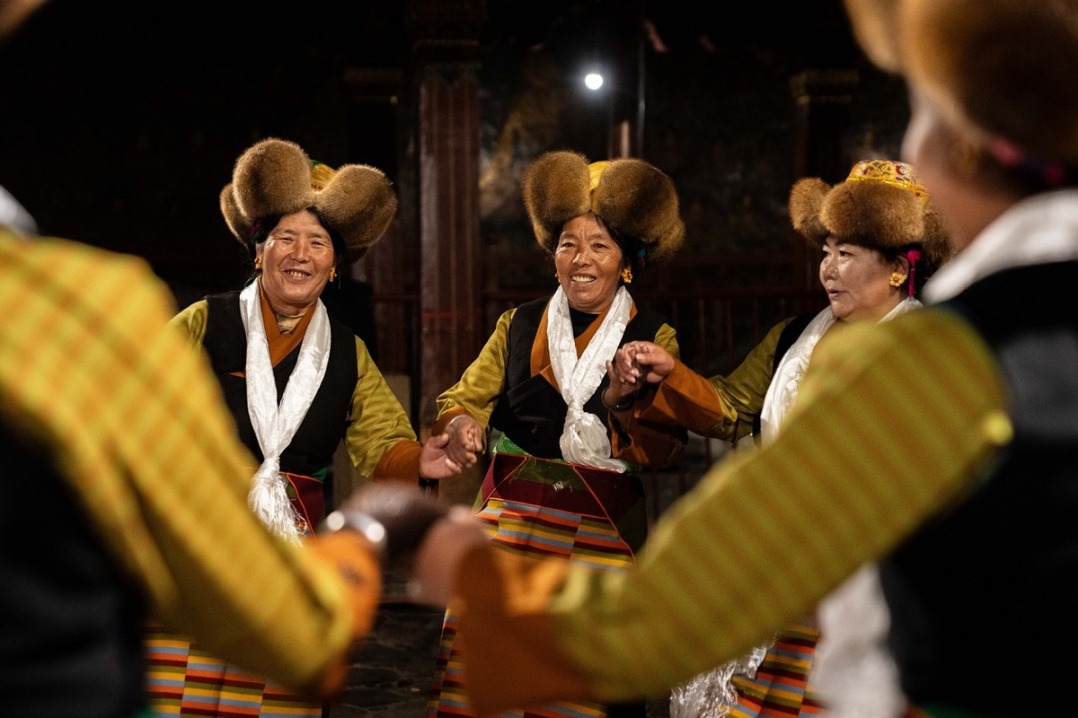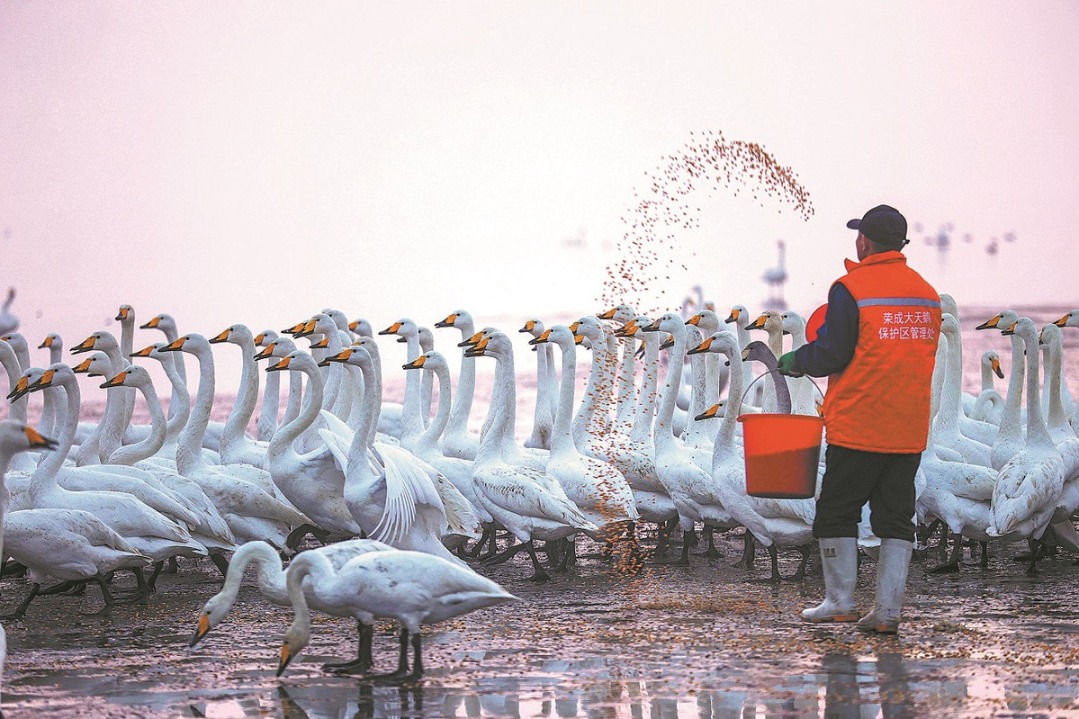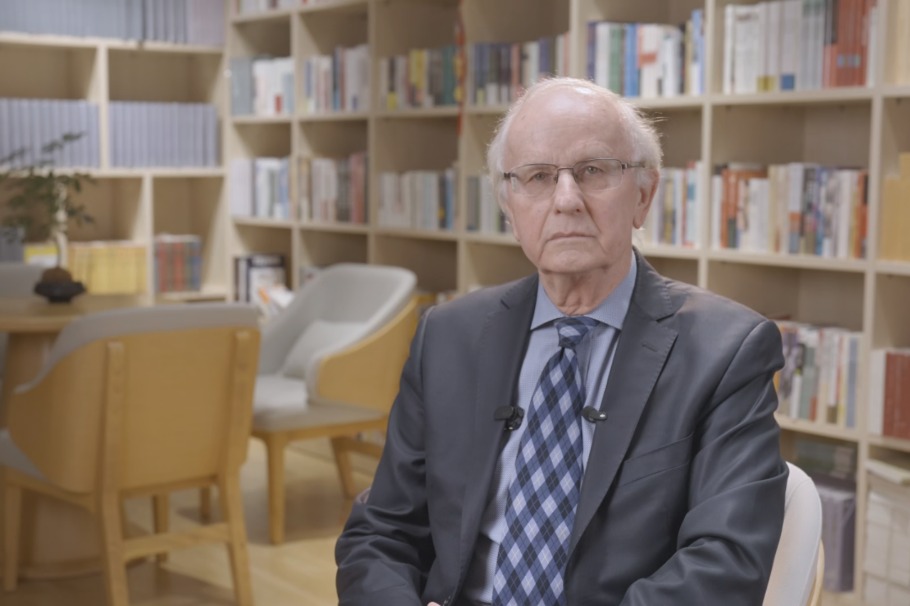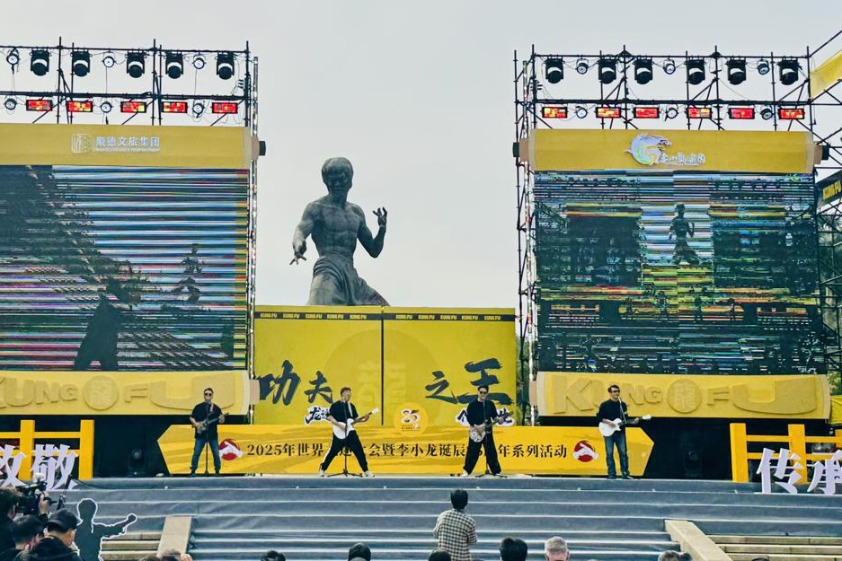Poverty alleviation efforts pay off
Even in China's remotest areas targeted efforts have improved people's lives. Li Lei in Beijing and Li Yingqing in Kunming report.


When the TV cameras captured an 8-year-old Yu Yanqia dragging herself upside down along a steel rope strung above the raging Nujiang River on her daily journey to school, little would she have thought that things were going to get much better.
Back then there were no bridges striding the Nujiang in rural Fugong county, so the only way across the torrent for young and old was via a primitive and precarious steel rope and pulley system.
That was in 2007 in Yunnan province. And things have got a lot better for the "steel cable girl", her local area, and for millions of formerly impoverished Chinese people over the last few decades.
The images of Yu struggling to pull herself across the river came as a shock to many who lived outside of rural China at that time, but for the young girl, it was just another part of daily life.
Yu, now a doctor at a hospital in Nujiang Lisu autonomous prefecture where Fugong county is situated, remembers how her heart raced with the howling wind each time she crossed the river.
"I'd never been far from my village before, so I just thought everyone used pulley bridges to cross rivers," she told Chinese media in July.
The images of her crossing the river gained national attention and spurred action to build a bridge across the Nujiang. The following year when the bridge was completed, Yu was chosen as the first person to cross it.
Yu's story encapsulates the rapid progress that has been made in China in improving infrastructure and lifting people out of poverty, especially in remote parts of the country.
Two decades ago, Fugong was a place with some of the nation's most entrenched poverty, with over half the people living there being impoverished. Yunnan had the highest number of poverty-stricken counties like Fugong in the country, totaling 88.
Today, villages are linked by paved roads and bridges stride across rivers, meaning that communication, the flow of people and the trade of goods can move more fluidly. Access to education, healthcare, work and daily necessities has also vastly improved.
National aspiration
Escaping poverty is a cherished aspiration of the Chinese people and a vital element in achieving the great rejuvenation of the Chinese nation.
Since the founding of New China in 1949, the battle against poverty has remained a top priority for the Communist Party of China. Following the 18th CPC National Congress in 2012, central authorities intensified efforts to eliminate rural poverty, setting a goal to eradicate poverty before the Party's centenary in 2021.
A key aspect of this campaign has been enhancing rural connectivity.
By 2016, all pulley bridges in Nujiang prefecture had been replaced by modern ones. Today, these bridges along the Nujiang River have transitioned from being tools of transportation to tourist attractions.
Official figures show that since the 18th CPC National Congress, China has newly built or reconstructed more than 2.53 million kilometers of rural roads, and built paved roads in 1,040 townships and 105,000 villages. Over 50,000 villages have also been connected by passenger bus services.
Hard-won battle
Nearly 100 million rural poor escaped poverty between 2012 and 2021, effectively ending domestic poverty on the Chinese mainland.
This achievement stands out even more when considering the global trend of rising poverty.
According to World Bank data from 2022, 712 million people worldwide were living in extreme poverty, an increase of 23 million compared to 2019.
The COVID-19 pandemic significantly hampered global poverty reduction, leading to three years of setbacks between 2020 and 2022, particularly affecting low-income countries.
As the fight against poverty in China entered its final stages, President Xi Jinping emphasized the importance of continuous efforts to secure a complete victory during the seventh National Poverty Relief Day on Oct 17, 2020.
Addressing a national teleconference where China recognized individuals and institutions for their exceptional work in poverty alleviation, Xi reaffirmed the unwavering determination of the CPC Central Committee to achieve the goal of poverty alleviation as planned.
China's determination to end domestic poverty on schedule, even as the COVID-19 pandemic caused job losses and impoverishment on massive scales globally, won praise worldwide.
In the lead-up to the seventh National Poverty Relief Day, Guy Ryder, then director-general of the International Labor Organization, said China's decision to stick to the goal of eradicating rural poverty by the end of 2020 amid a "complex economic environment" set a benchmark in meeting the United Nations 2030 Sustainable Development Goals, which include eliminating extreme poverty worldwide in a decade.
On Feb 25, 2021, at a conference in Beijing, President Xi announced that China had achieved a complete victory over absolute poverty, with a total of 98.99 million rural poor having been lifted out of poverty.
"China has completed the task of eradicating absolute poverty, which is truly a miracle of human society," said Zhang Jun, then China's permanent representative to the UN, in a briefing on China's achievement and experience in poverty reduction in 2021.
He said China's achievement in poverty reduction is an important contribution to global human rights.
It shows the world a real picture of China. More than 1.4 billion Chinese enjoy higher living standards and live a peaceful, free and happy life. This is the biggest human rights project and the best human rights practice, he said.
China's poverty struggle dates back to the early days of the People's Republic of China, and accelerated as the nation adopted market-oriented reforms in 1978.
China created a specialized poverty relief agency in 1986. Key initiatives followed, including the abolition of agricultural taxes in 2005 and the setting of a poverty line in 2011, which has been used to track the progress of poverty alleviation since 2012.
The pivotal 2012 Party gathering set a deadline to eradicate poverty by 2021, leading to targeted relief measures.
By 2021, China declared victory over absolute poverty. In recent years, China has vowed to sustain progress and prevent relapses into poverty, showcasing the nation's unwavering dedication to uplift its rural population.
The number of Chinese who escaped poverty in the past four decades accounted for more than 70 percent of the world's impoverished people during that period, measured by the poverty threshold set by the World Bank.
Du Shuangqing, a resident of Gansu province, which was once home to some of the country's poorest families, was one of the beneficiaries of the improvements.
In 1988, Du was born into a poor farming family in mountainous Longnan city. At age 9, he lost his right arm in a rockslide, which resulted in medical expenses his family was unable to meet.
The 36-year-old, who works for the local disabled people's federation, recalled wearing his two older sisters' clothes throughout primary school to reduce the family's financial burden.
He said he would have dropped out of school had it not been for government allowances designed to help poor students.
"Our grain harvest was usually small, and my parents had too many children to support. Back then, life was hard," he said.
Du, also a poverty relief official, said that in recent years local authorities have invested tens of millions of yuan to build a road linking his secluded village with the outside world, even though it is home to just about 40 families.
"The CPC prioritizes people's interests over economic considerations," he said, adding that the dropout rates at local schools were near zero, with more students going to college thanks to a campaign of investment in education to break the cycle of poverty.
Yan Yong is the Party chief of a once-impoverished village in Yunnan province, home to a mosaic of ethnic groups who lived tough lives until recently.
He said paved roads have cut the journey time to a nearby township from about four hours to just 20 minutes, benefiting the local sugar cane industry, which was introduced as part of the local anti-poverty drive.
In addition, local governments have built sturdy homes so rural residents no longer have to worry about bad weather and are able to focus on farming.
"We have good natural advantages for the development of tourism and we're planning to build a hot spring resort so locals will not need to travel far to find jobs," Yan said.
- Xi, Macron hold informal meeting in China's Sichuan
- The 'Gyrfalcon' mounted police team safeguards grasslands in northern borderland of China
- Liaoning launches first province-level online book lending platform
- Annual Fairy's Day marked in Xizang
- Chinese, Cuban communist parties hold seventh theory seminar
- Full moon seen across China
















